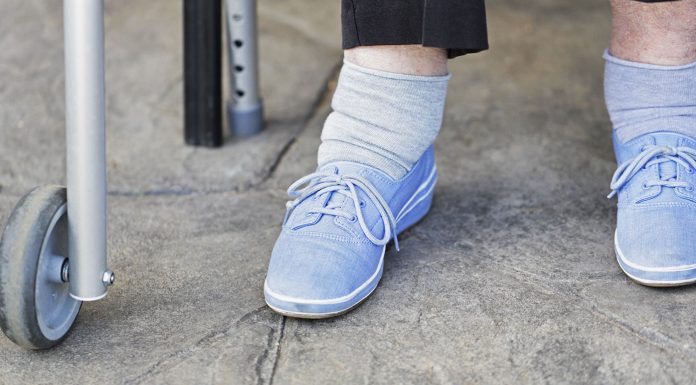Reading this article and undertaking the learning activity is equivalent to 60 minutes of professional development.
This learning activity is relevant to the Nursing Council competencies: 1.2, 1.4, 1.5, 3.2, 4.2
Learning outcomes
Reading and reflecting on this article will enable you to:
- Consider the impact of institutional visiting hours on patients, their family or whānau
- Reflect on your personal and professional response to visitors in your work area
- Compare staff responses to visiting in your own work area
- Formulate strategies that will allow you to effectively manage and maintain the safety of patients and staff, while still maintaining a partnership approach that values the input of families and whānau.
Introduction
As I was pushing my niece in a wheelchair to see her new premature baby the day after her emergency caesarean section, the unit receptionist asked who I was. Her response to that information was to tell me I could visit this time (as I was pushing the wheelchair), but in future would have to wait for visiting hours. She then recited the visiting rules. What a welcome, and not what my niece needed at that time1.
Visiting hours in New Zealand’s public hospitals have been a moveable feast over recent decades. While the rules around visiting may be becoming more accommodating, restrictions remain in many parts of the country with a significant variation in official visiting hours between DHBs.
Although restrictions in hospital visiting may follow historical precedents2, it is often difficult to identify the rationale behind current restrictions. The most common explanation found on DHB websites was the need to allow patients to rest. Other reasons included:
- Increased staff workload, which is then disrupted by visitors
- Lack of space
- Patients requiring treatments
- Privacy issues associated with medical rounds
- Visitors being inconsiderate to other patients
- Concerns about theft and vandalism, especially after hours
- Cross-infection.
These reasons link to broader concerns about maintaining a safe environment for staff, patients and other visitors. In 2010, Waikato Hospital was reported as being about to trial new restricted visiting hours in response to what they referred to as “chaotic, overcrowded wards” in the hope of “regaining control” over patients’ recoveries3. In late 2014, an unnamed staff member at Whanganui Hospital claimed in the media that nurses feared for their safety at the hospital because of a lack of control over what were described as “volatile” visitors4. While these concerns are real for the staff concerned, are restrictions on visiting always the answer or are they sometimes the problem?
Applying the rules
Even within the one hospital there can be considerable variation in visiting hours between wards and units, as well as
differences between institutions in the same DHB. Regardless of what the official visiting hours may be, inconsistencies in adherence to those hours are common and problematic for everyone. At a ward/unit level, some staff may be prepared to put patients’ needs ahead of the policy, as the following anecdote demonstrates:
I was the identified support person for a close friend recovering from extensive abdominal surgery. My friend was deeply shocked by her diagnosis, as well as recovering from the surgery. She wanted somebody with her constantly to support her for the first few days post-op. The ward was closed to visitors for several hours each afternoon. Some nurses were quite comfortable with me reading quietly in her room, as long as I didn’t disturb her rest or that of any other patient. Other staff were sticklers for pushing everyone out the door and locking it fast1.
Working out whether staff are ‘sticklers’ or not puts additional stress on patients and families who have to decipher the rules5. Having to plead for access out of hours can be demeaning for visitors, and patients may be left distressed:
I was scared that I was going to die because of my previous reaction to Fentanyl. My husband knew, my mother knew, but they weren’t there. That terrifying situation happened because the hospital’s rules wouldn’t allow my family to stay with me6.
Not only was this patient distressed, but it is likely that her family were also discomforted – wanting to be there, knowing they should be there and not being allowed. This raises the issue of whether ‘visitor’ is even the correct term for family members, whānau or significant others?
Visitor status
I’d been staying with Mum in hospital, showering her, taking her to the toilet, doing whatever she needed. The nurses watched her drip. We have a pākehā friend who is like family to us. Mum calls her ‘her other daughter’. I’d been there for three nights, and was exhausted, so my ‘sister’ took over being with Mum for the night shift. I told the nurse I was going home, and that my sister would be with her. I rang later to check how Mum was, and the nurse said, “Oh, you are supposed to be up here with your mother”. I asked if anyone was with Mum, and she replied, “There’s a blonde person sitting out there with her”. That doesn’t sound very nice, does it7?
In this situation, staff were comfortable with family members being present 24 hours a day, and undertaking much of their mother’s personal care. Unfortunately, assumptions were made based on cultural stereotypes about who could be a whānau member, and without understanding that a kaupapa whānau includes others not related by kinship.
Contemporary families are complex and diverse and it is always dangerous to make assumptions as to who is the most significant patient supporter, or to attempt to determine ethnic identity on the basis of physical characteristics.
One useful approach is to adopt personcentred visiting, where the patient and their family decide who are the significant people to be present when someone is in hospital.
Use of a ‘nominated contact person’ or ‘identified support person’ goes some way in enabling patients and family to identify significant supporters, but the missing component is free access to provide the necessary support.
Box 1: Family presence and participation
Restrictive visiting policies are often based on long-held beliefs that the presence and participation of families interferes with care, exhausts the patient, is a burden to families, or spreads infection. These are myths and misperceptions. There is no current evidence to support those beliefs5
Working in partnership?
As Taima Campbell, the then Director of Nursing and Midwifery for the Auckland DHB, noted in 2012: “On the one hand we talk about patient-centred care; for a lot of patients, part of their healing is having their family. On the other hand, we kick [families] out.8”
Restricting visiting not only limits family access to the patient, it also reduces the important opportunities for staff and families to interact. Restricting opportunities for families to communicate with staff conflicts with nurses’ professional and legal responsibilities to work in partnership with the patient and their family (refer to related competencies and standards sidebar).
The New Zealand Health Quality and Safety Commission9 recently published the results of its survey of 6,000 people who were inpatients in DHB hospitals in November 2014. Only 55 per cent of respondents reported that the hospital staff included their family or whānau or someone close to them in discussions about their care.
The people who are essential to the ongoing support, comfort, and wellbeing of the patient must be identified and included. As argued by Clisset et al10 in a study of the experiences of family carers of older people with mental health problems who were admitted to general hospital wards: “Health care professionals need to be more consistent in working in partnership with family carers, recognising them as a source of expertise in the specific needs of a person …” This theme of the need for nurses and families to work in partnership recurs in the literature supporting open visiting policies11.
Cultural considerations
The need for families to be present when a family member is sick is an almost universal cultural value5. The configuration of our public hospitals poses some challenges in relation to person-centred visiting. Our older hospitals
have a predominance of shared rooms, where four-bedded cubicles are common, patient privacy is at a premium, and small, uninviting patient lounges provide limited opportunities for visiting family groups. These environmental factors create problems for nurses, and also for families:
My uncle was in hospital, and all the whānau came in to see him because that’s what he wanted and expected. He had many visitors, and there wasn’t enough space in his room so others were waiting quietly in the lounge. Just feeling those vibes from staff like ‘you shouldn’t be here, there are too many of you in there’. I was feeling a bit stressed out ‘cause they were all looking at us, but uncle didn’t want us to go. They had their rules, even down to the numbers of visitors he was allowed, but those rules were a problem for uncle, and therefore for us7.
In this example, space for a large whānau caused challenges, however so did the style of communication between nurses and the whānau. The whānau were the ones caughtbetween the rules, the patient’s need for family support, and the whānau obligations to care. The importance of the whānau to patient recovery is well recognised12. While some new hospitals now include visitor lounges/rooms to accommodate larger family groups, these are not available in all hospitals, however they should be prioritised.
Box 2: The presence and participation of families/other partners in care
- Families and other partners in care welcome 24 hours (as determined by patient preference)
- Patients asked to define family/partners in care, and with the guidance of staff determine what their role will be
- Negotiation about the number of people who can be at the bedside at any one time
- Expectations for when children visit
- Identification of a family spokesperson
- Directly and promptly addressing disruptive behaviour
- Visitors free from infection
- During disease outbreaks, staff work to facilitate selected family members still being present.
Extract from guidelines developed by the Institute for Patients and Family-Centred Care (19).
Open all hours?
Research has identified the impact on patient outcomes when family members are present, including benefits such as a reduction in patient falls6. In one of the few randomised trials comparing restricted with unrestricted visiting in an intensive care unit13, researchers identified positive outcomes for patients when visiting was unrestricted including reduced anxiety scores, lower levels of stress hormones, reduced cardiovascular complications, and no increase in sepsis. The National Health Service Scotland has produced a short film celebrating the many positive effects resulting from their implementation of person-centred visiting14.
This includes family support when staff are busy, staff gaining an increased understanding of the patient’s background, and improved safety and effectiveness of care. They note that when visitors are not constrained to
specific short periods of visiting, they are much more likely to leave when the patient is tired, knowing they can come back again later. In many overseas countries, families are expected to be present 24 hours a day to provide all of the personal cares that a patient requires. In New Zealand’s professionalised health care system, the roles of families in providing care have changed, but staff then frequently report they are unable to provide such care because they are too busy15. There are opportunities for enhancing nursing roles when families who are able are supported to take responsibility for activities such as ensuring the patient is assisted at meal times. However, ongoing communication between the staff, patients and family members about caregiving roles is crucial for safe care16. In organisations where open visiting is supported, additional responsibilities have been identified for nurses, including transitioning from patientcentred to family-centred care and caring for family members16. With person-centred visiting, there are few, if any, restrictions on the hours during which visitors may be present. However there are guidelines to maintain a safe environment and a core component is the need for communication between all parties.
Ensuring the safety of visitors during emergency situations must also be considered. The evidence from institutions that have moved to this system is that it has been positive for patients, families and staff14,17,18,19 although a formal change management process is essential for success.
Clear guidelines are necessary to ensure patient, visitor and staff safety. These may include:
- Patients and families nominating who is to have unlimited access
- Guidance about supporting patient recovery through rest periods
- Acceptance by families that staff may require them to leave temporarily when treatments are being undertaken
- Emergency management plans also include strategies to support family/visitors present at the time of an emergency
- Appropriate security arrangements, especially after hours, when there are fewer staff present
- Adequate space for visitors to avoid disturbing other patients
- Consistent communication with patients and families via information from staff, appropriate signage, and information booklets.
Conclusion
Restricting visiting hours limits the opportunity for working in partnership with patients and their family or whānau. Reconsideration of what constitutes visiting, and who visitors are, is long overdue. One perspective worthy of further consideration is the notion that it is hospital staff who are visitors in the patients’ lives, rather than their families being visitors in the life of the hospital6. Changes in attitudes, policy and practice, and most importantly, communication, are required to ensure that the visiting experience is a positive one for the patient, their family/whānau and all members of the health care team.
View PDF of this article (and related learning activity) here >>
About the authors:
- Lesley Batten, RN PhD and Marian Bland, RN PhD are both experienced nurses and researchers, and regular hospital visitors supporting hospitalised family and friends.
- Lesley works in the Research Centre for Māori Health & Development, Massey University, Palmerston North. Marian is Quality Coordinator, Ranfurly Residential Care Centre, Feilding, and a health care auditor.
This article was peer reviewed by:
- Denise Wilson RN BA MA (hons) PhD (Nursing) is Professor of Māori Health and director of the Taupua Waiora Centre for Māori Health Research at Auckland University of Technology.
- Sue Wood RN MNS is the former director of nursing for MidCentral District Health Board and currently Quality & Patient Safety Director for Canterbury District Health Board.
Recommended resources
- The American Joint Commission on Healthcare website has resources on effective communication and cultural competence related to family-centred care: www.jointcommission.org/Advancing_Effective_Communication
- Better Together: Partnering with Families is an initiative of the American Institute for Patient and Family-Centred Care: http://www.ipfcc.org/bestpractices/better-together.html
- White Coat, Black Arts is a Canadian radio programme discussing various aspects of visiting hours, the restrictions imposed when patients are in shared rooms, and the consequences for the family of a terminally ill patient: www.cbc.ca/radio/whitecoat/the-end-of-visiting-hours-1.2801166
- Health Safety and Quality Commission New Zealand outlines a number of strategies for getting feedback from health consumers about services: https://www.hqsc.govt.nz/our-programmes/partners-in-care/publications-and-resources/publication/784/
Health and Disability Sector (Core) Standards 200821
Standard 1.12 Consumers are able to maintain links with their family/whānau and their community.
Criteria 1.12.1 Consumers have access to visitors of their choice.
Guidance: Consumers have access to visitors of their choice (including children) when the safety of the consumer and others is not compromised. The safety of consumers in the presence of visitors needs to be assured. This may include, but is not limited to:
- Clinical stability of consumer
- Legal status of consumer
- Safety in relation to room size and/or other consumers in a shared room
- Appropriate behaviour of visitors – such as behaviours that impinge on the safety of the consumer, other consumers,and/or service providers
REFERENCES
- Personal anecdotes freely shared with the authors about visiting in New Zealand hospitals when people heard they were developing this article.
- ISMAIL S & MULLEY, G (2007). Visiting times. British Medical Journal 335 1316.
- TWENTYMAN, M (2010). ‘Chaotic’ hospital targets visiting times. Waikato Times 28 August, A9.P
- Nurses fear for safety. Hawke’s Bay Today, 13 December 2014, A017.
- CIOFFI, J (2006). Culturally diverse family members and their hospitalised relatives in acute care wards: a qualitative study. Australian Journal of Advanced Nursing 24(1) 15-20.
- BETTER TOGETHER: PARTNERING WITH FAMILIES (undated). Facts and figures about family presence and participation. http://www.ipfcc.org/bestpractices/Better-Together-Facts-and-Figures.pdf
- BATTEN L, HOLDAWAY M & THE LCP RESEARCH TEAM (2012). Data excerpts from the unpublished study. Culturally appropriate end-of-life care for Māori. Palmerston North: Research Centre for Māori Health and Development, Massey University.
- CASSIE, F (2012). Patients as best teachers. Nursing Review 12(9), 26.
- NEW ZEALAND HEALTH QUALITY & SAFETY COMMISSION (2015). Patient experience results. Retrieved February 2015 from www.hqsc.govt.nz/assets/Health-Quality-Evaluation/NEMR/patient-experience-survey-results-Feb-2015.pdf
- CLISSETT, P, POROCK, D, et al. (2013). Experiences of family carers of olderpeople with mental health problems in the acute general hospital: a qualitativestudy. Journal of Advanced Nursing 69(12) 2707-2716.
- TRUELAND, J (2014). A flexible approach in Scottish hospitals is makingvisitors feel welcome on the wards. Nursing Management 21(2) 8-9.
- WILSON, C, & BAKER, M (2012). Indigenous hospital experiences: A NewZealand case study. Qualitative Health Research 22(8) 1073-1082.
- FUMAGALLI, S, BONCINELLI, L, et al. (2006). Reduced cardiocirculatory complications with unrestrictive visiting policy in an intensive care unit. Circulation 113 946-952.
- NATIONAL HEALTH SERVICE SCOTLAND (2014). Person-centred visiting in NHS Scotland. FILM. Retrieved February 2015 from http://www.qihub.scot.nhs.uk/video-hub/-person-centred-visiting-in-nhsscotland.aspx
- CARVILLE, O (2014). Overworked nurses ration patient care. The Press, 27May, Retrieved February 2015 from www.stuff.co.nz/the-press/news/10079520/Overworked-nurses-ration-patient-care
- RICCIONI, L, AJMONE-CAT, C et al. (2014). New roles for healthcare workers in theopen ICU. Trends in Anaesthesia and Critical Care 4 182-185.
- SHULKIN D, O’KEEFE, T et al. (2013). Eliminating visiting hour restrictions inhospitals. Journal for Healthcare Quality 36(6) 54-57.
- NUSS, T, KELLY, K et al (2014). The impact of opening visitation access on patientand family experience. The Journal of Nursing Administration 44(7/8) 403-410.
- INSTITUTE FOR PATIENT AND FAMILY CENTRED CARE (2015). IPFCC challenges hospitals to eliminate restrictive visiting policies. Retrieved February 2015 from http://www.ipfcc.org/bestpractices/better-together.html
- NURSING COUNCIL OF NEW ZEALAND (2007). Competencies for registerednurses. Retrieved February 2015 from www.nursingcouncil.org.nz/Publications/Standards-and-guidelines-for-nurses
- STANDARDS NEW ZEALAND (2008). Health and Disability Service Standards. Retrieved February 2015 from http://www.health.govt.nz/our-work/regulation-health-and-disability-system/certification-health-care-services/services-standards




















